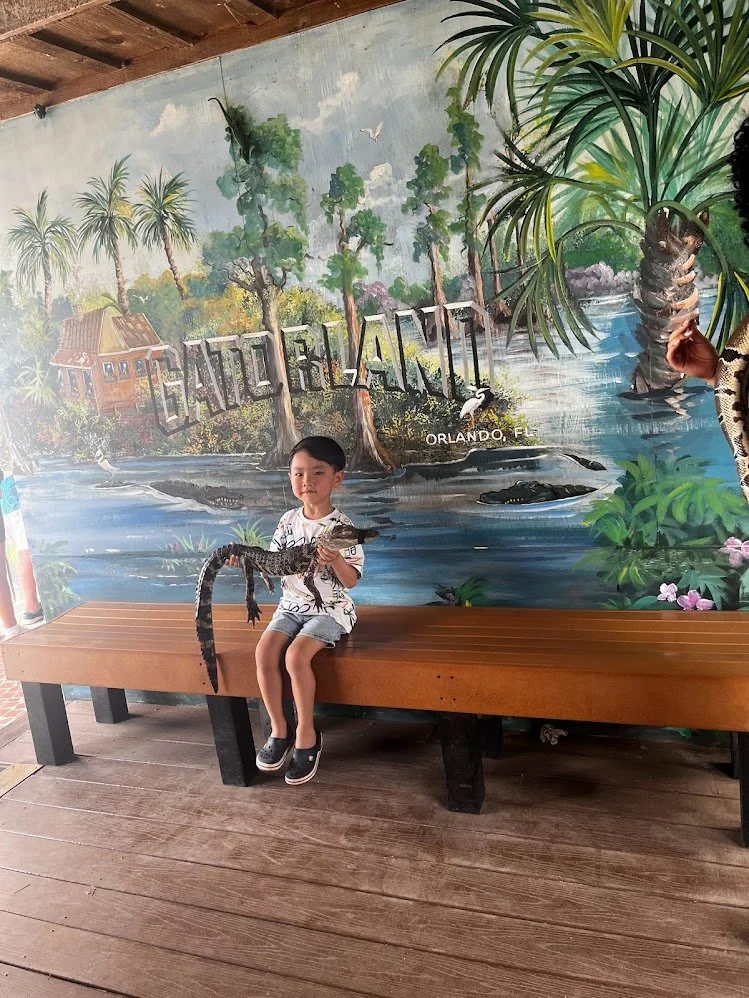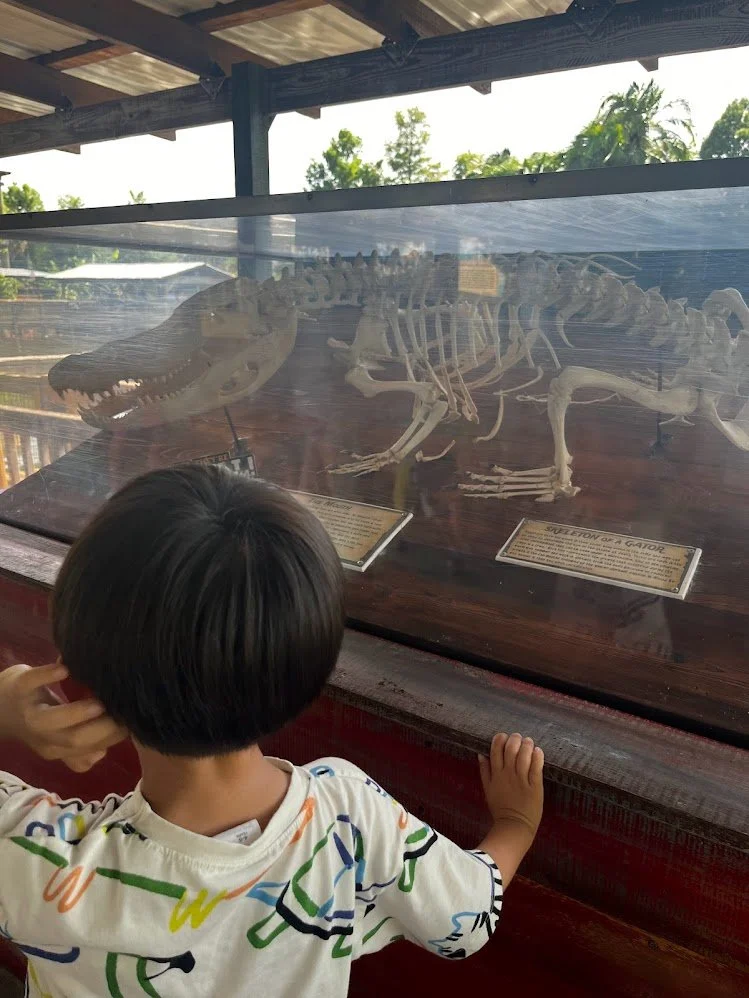A Day at Gatorland: An Unforgettable Adventure in Orlando
As someone with a profound love for dinosaurs, Eli has always been fascinated by their closest living relatives: crocodiles and alligators. This fascination, however, was met with a slight disappointment due to the lack of gator experiences available at our local zoos. Determined to fulfill his adventurous spirit, we decided to embark on a journey to Orlando over the 4th of July weekend, specifically to visit Gatorland, a sanctuary and theme park dedicated to these magnificent creatures. What followed was an unforgettable day that not only brought us closer to the world of these modern-day dinosaurs but also offered us a plethora of unique experiences.
Feeding the baby alligators
On the day of our visit, Florida welcomed us with a scorching 108 degrees weather. Yet, this did not deter our spirits; if anything, it added to the authenticity of exploring a habitat that alligators thrive in. Entering Gatorland, we were immediately greeted by the opportunity to feed baby alligators at the feeding station. This became the highlight of Eli's visit. For a small price, we were provided with fish attached to a simple wooden fishing rod, which we dangled over the water until eager baby alligators snapped them up. The sheer joy and excitement on Eli's face were indescribable, leading us to revisit this activity at least five times throughout the day.
Gators everywhere!
The expansive nature of Gatorland became apparent as we ventured further into the park. It was a surreal experience to gaze out over the waters and see countless alligators swimming freely in their natural environment. This sight was not only a testament to the park's commitment to providing a genuine habitat for these creatures but also an incredible spectacle for visitors.
Among the many unique attractions at Gatorland, the albino alligators held a special allure. These rare creatures, with their ghostly white skin and piercing blue eyes, were a mesmerizing sight. It was a reminder of the diversity and complexity of nature, offering a rare glimpse into the genetic variations that exist within the animal kingdom.
Adding to the hands-on experiences, Gatorland hosts a photo station where visitors have the chance to hold a young alligator and even have a giant snake draped around their necks for a photo op. While the snake proved to be a bit too ambitious for Eli, he was thrilled to hold the alligator, a moment captured in a photo that will undoubtedly be cherished for years to come.
As we explored further, we noticed other activities scattered throughout the park, such as zip lines, which added a thrilling dimension to the Gatorland experience. Although we didn't participate, watching others soar above the park, with alligators visible below, seemed like an exhilarating way to view the park from a different perspective.
Can’t leave out the alligator skeleton
Our adventure culminated where it began, at the entrance of the park, where we settled in to watch a live gator show. The performers were not only entertaining but engaging, drawing the crowd into the fascinating world of alligators. Watching these powerful creatures leap for food was a sight to behold, rounding off our visit with an adrenaline-pumping display of nature's raw beauty and power.
Bottom Line
Gatorland is more than just a theme park; it's a comprehensive immersion into the world of alligators and crocodiles, offering educational insights, hands-on experiences, and unforgettable memories. For Eli and me, it was a journey that brought us face-to-face with the awe-inspiring descendants of dinosaurs, deepening our appreciation for these ancient creatures. Whether it's feeding baby alligators, marveling at the rare albino variants, or witnessing the raw power of these animals in a live show, Gatorland offers an adventure that is both thrilling and educational.









